Usnea cornuta Körb.
Parerga Lichenol.: 2, 1865.
Synonyms: Usnea confusa Asahina; Usnea constrictula Stirt.; Usnea inflata (Duby) Motyka; Usnea inflata var. cornuta (Körb.) Clauzade & Cl. Roux; Usnea intexta Stirt.
Distribution: N - Frl, TAA (Nascimbene & al. 2007b), Lig. C - Tosc, Sar (Ravera & al. 2024a). S - Camp, Cal (Brackel & Puntillo 2016), Si (Ravera & al. 2024).
Description: Thallus fruticose-filamentous, greenish, usually shrubby, 3-7(-10) cm long, the branching sympodial, mainly anisotomic-dichotomous with divergent branches. Main branches to 1.5 mm thick, tapering to fusiform, with numerous annular cracks which divide the branch into cylindrical to sausage-like, terete segments, the base pale to black; lateral branches distinctly constricted at attachment point, the terminal branches arranged at right angles to the secondary branches. Papillae and tubercles few to numerous, most dense on secondary branches; fibrils irregularly distributed but usually numerous on main branches close to the basal part, spinulose, up to 3 mm long. Soralia most numerous on terminal branches (last third of thallus length), crowded (30-50 soralia/mm2), mainly developing from the cortex on secondary and terminal branches, flat and irregular in outline, remaining level with the cortex, initially punctiform (50-200 µm across) and occupying less than the half of the diameter of the branch, but later often confluent and resembling a single large soralium, often with 0.1–0.2 mm long, clustered isidiomorphs when young. Cortex thin to moderately thick (5–9% of total branch thickness), vitreous in longitudinal section; medulla heterogeneous, with a narrow compact ring below the cortex, otherwise lax to dense, rather thick (25–37%), white; central axis white to pale orange or pink, thin to moderately thick (15–35%); ratio axis/medulla ranging between 0.4 and 1.2. Apothecia very rare, lecanorine, to 5 mm across. Asci 8-spored, Lecanora-type. Ascospores 1-celled, hyaline, ellipsoid. Photobiont chlorococcoid. Spot tests and chemistry: cortex K-, C-, KC-, P-, with usnic acid; medulla with 2 chemotypes: 1) K+ yellow turning red, C-, KC-, P+ yellow to orange-red, with salazinic and sometimes protocetraric and/or constictic acids. 2) K+ yellow turning blood-red, C- KC-, P+ yellow-orange, with stictic acid (major) and variable amounts of norstictic, menegazziaic and constictic acid, sometimes also with low amounts of salazinic acid.
Note: a chemically and morphologically variable epiphytic species also occurring on siliceous rocks, restricted to damp sites with frequent fog, mostly in the montane belt. It is part of a complex of quite similar species which are often difficult to identify (see Gerlach & al. 2020), and most Italian records need confirmation. It is included in the Italian red list of epiphytic lichens as “Endangered” (Nascimbene & al. 2013c).
Growth form: Fruticose filamentous
Substrata: bark and rocks
Photobiont: green algae other than Trentepohlia
Reproductive strategy: mainly asexual, by soredia, or soredia-like structures (e.g. blastidia)
Restricted to humid-warm, oceanic areas
Commonnes-rarity: (info)
Alpine belt: absent
Subalpine belt: absent
Oromediterranean belt: absent
Montane belt: very rare
Submediterranean belt: absent
Padanian area: absent
Humid submediterranean belt: extremely rare
Humid mediterranean belt: absent
Dry mediterranean belt: absent

Predictive model
Herbarium samples
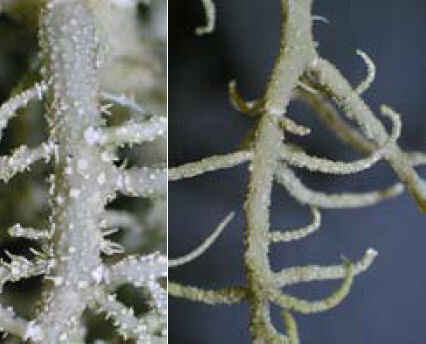
Tiiu Tõrra; Owner: Tiiu Tõrra - Institute of Ecology and Earth Sciences, University of Tartu, Estonia
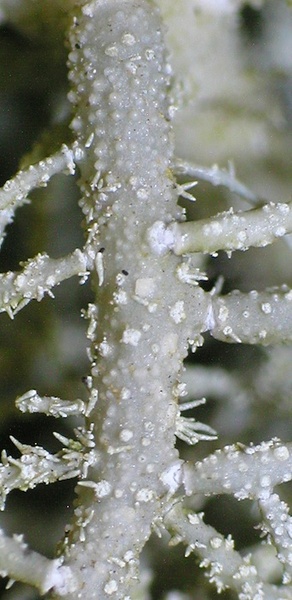
Tiiu Tõrra; Owner: Tiiu Tõrra - Institute of Ecology and Earth Sciences, University of Tartu, Estonia
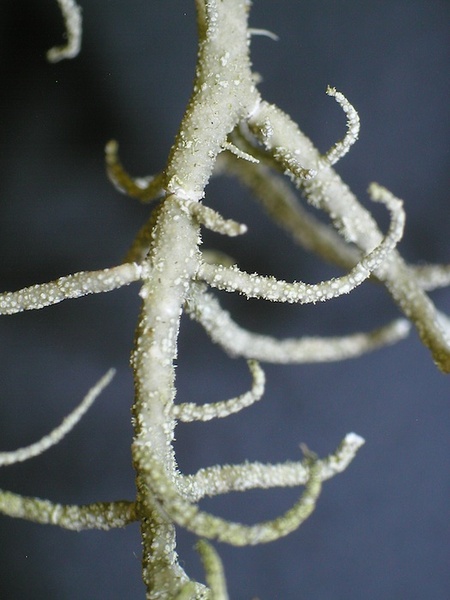
Tiiu Tõrra; Owner: Tiiu Tõrra - Institute of Ecology and Earth Sciences, University of Tartu, Estonia
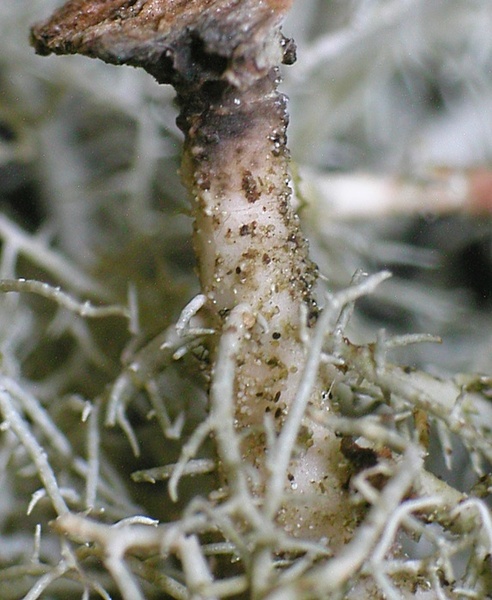
Tiiu Tõrra; Owner: Tiiu Tõrra - Institute of Ecology and Earth Sciences, University of Tartu, Estonia
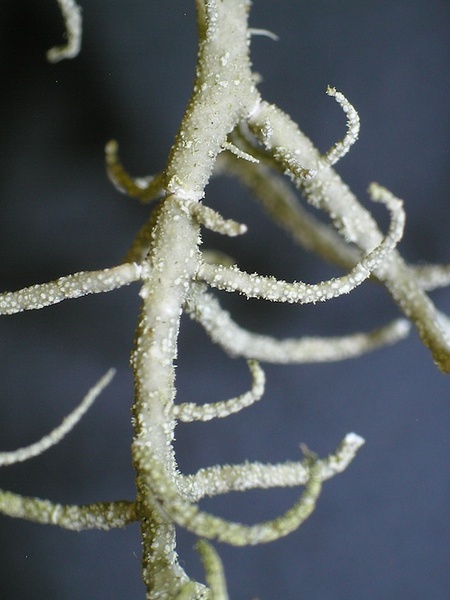
Tiiu Tõrra; Owner: Tiiu Tõrra - Institute of Ecology and Earth Sciences, University of Tartu, Estonia
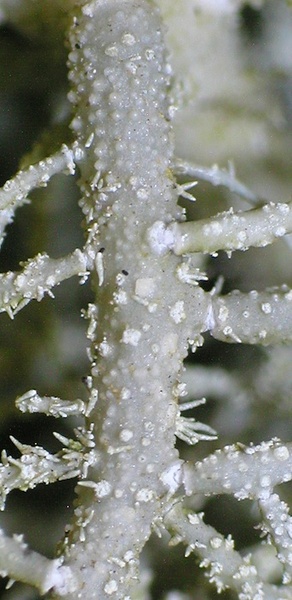
Tiiu Tõrra; Owner: Tiiu Tõrra - Institute of Ecology and Earth Sciences, University of Tartu, Estonia
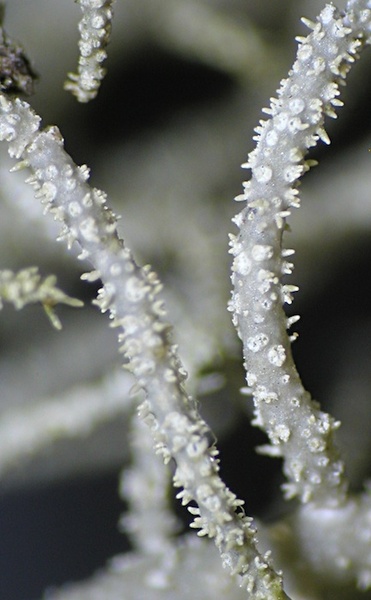
Tiiu Tõrra; Owner: Tiiu Tõrra - Institute of Ecology and Earth Sciences, University of Tartu, Estonia
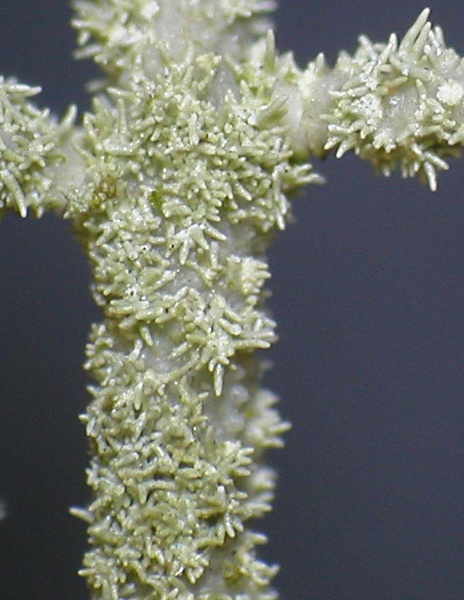
Tiiu Tõrra; Owner: Tiiu Tõrra - Institute of Ecology and Earth Sciences, University of Tartu, Estonia
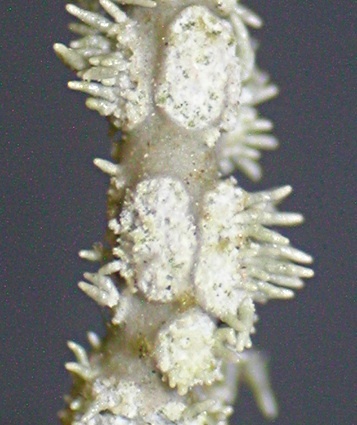
Tiiu Tõrra; Owner: Tiiu Tõrra - Institute of Ecology and Earth Sciences, University of Tartu, Estonia
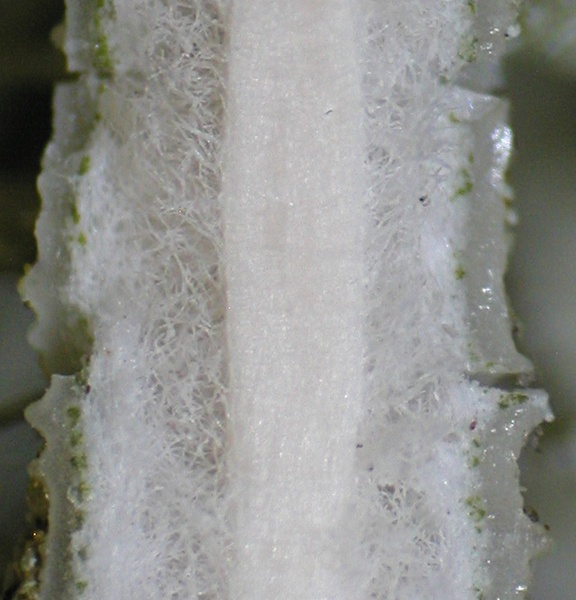
Tiiu Tõrra; Owner: Tiiu Tõrra - Institute of Ecology and Earth Sciences, University of Tartu, Estonia
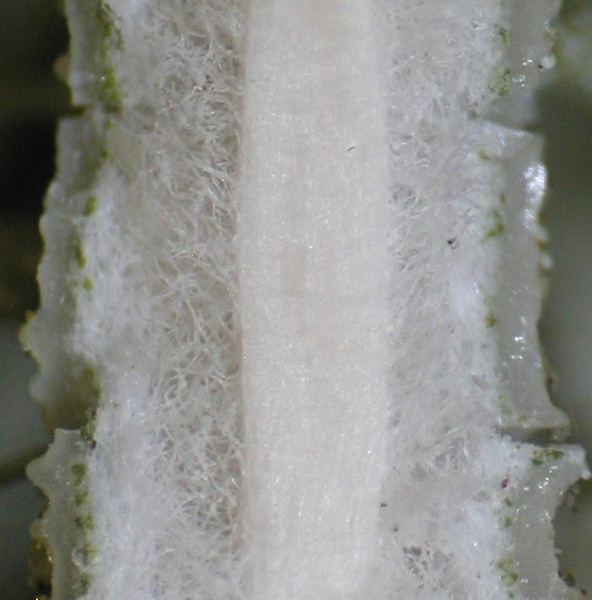
Tiiu Tõrra; Owner: Tiiu Tõrra - Institute of Ecology and Earth Sciences, University of Tartu, Estonia
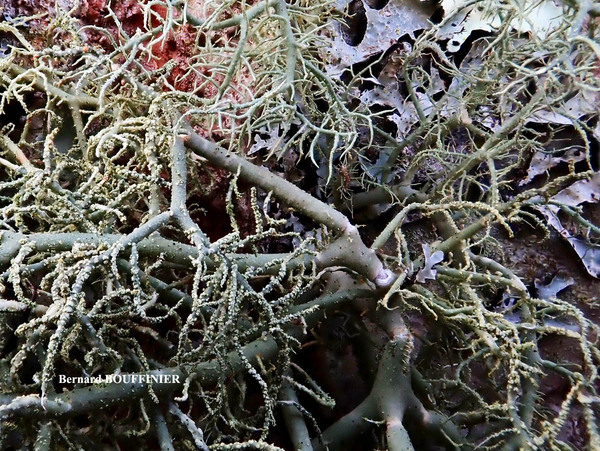
Bernard Bouffinier - Source: http://www.lichensmaritimes.org/index.php?task=fiche&lichen=660&lang=en
France, Camaret
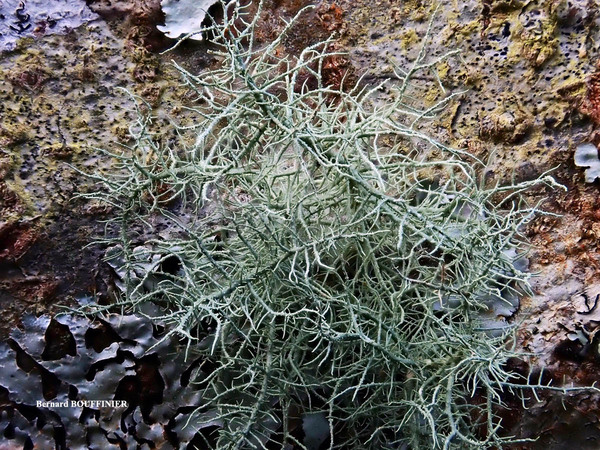
Bernard Bouffinier - Source: http://www.lichensmaritimes.org/index.php?task=fiche&lichen=660&lang=en
France, Camaret
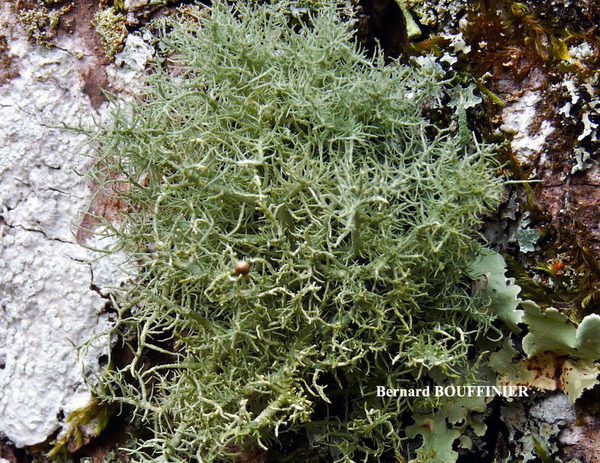
Bernard Bouffinier - Source: http://www.lichensmaritimes.org/index.php?task=fiche&lichen=660&lang=en
France, Le Relecq
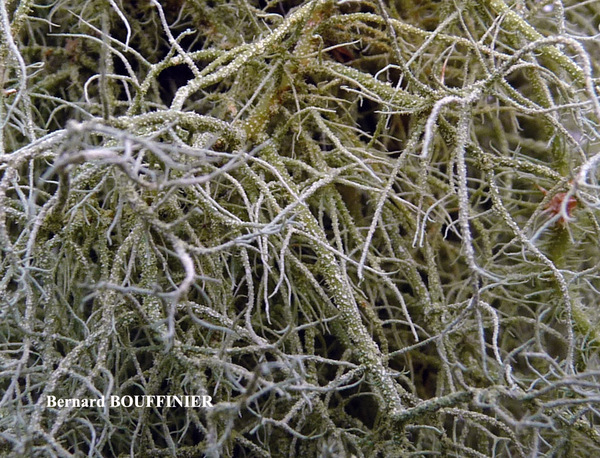
Bernard Bouffinier - Source: http://www.lichensmaritimes.org/index.php?task=fiche&lichen=660&lang=en
France, Hôpital-Camfrou
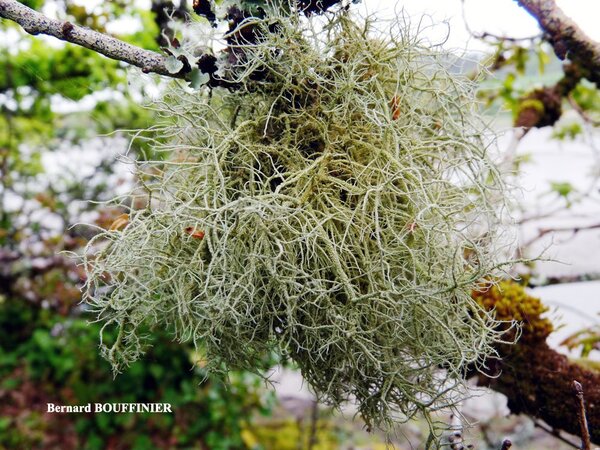
Bernard Bouffinier - Source: http://www.lichensmaritimes.org/index.php?task=fiche&lichen=660&lang=en
France, Hôpital-Camfrou
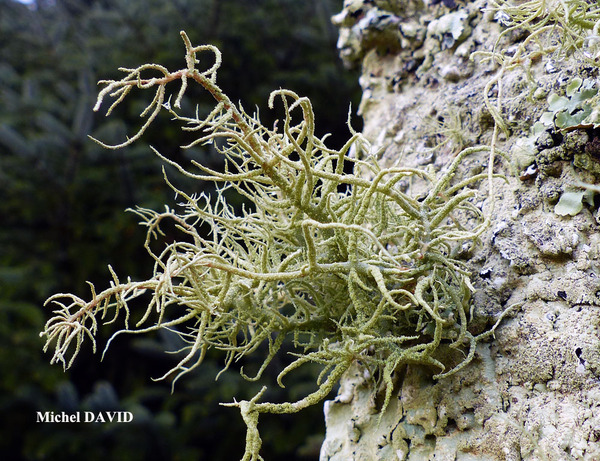
Michel David - Source: http://www.lichensmaritimes.org/index.php?task=fiche&lichen=660&lang=en
France, Roc'h Cléguer
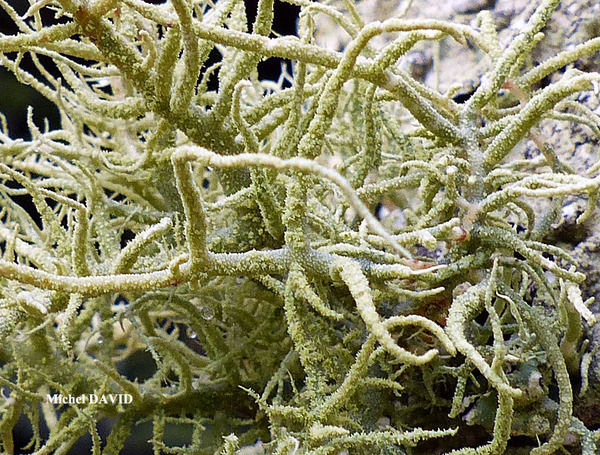
Michel David - Source: http://www.lichensmaritimes.org/index.php?task=fiche&lichen=660&lang=en
France, Roc'h Cléguer
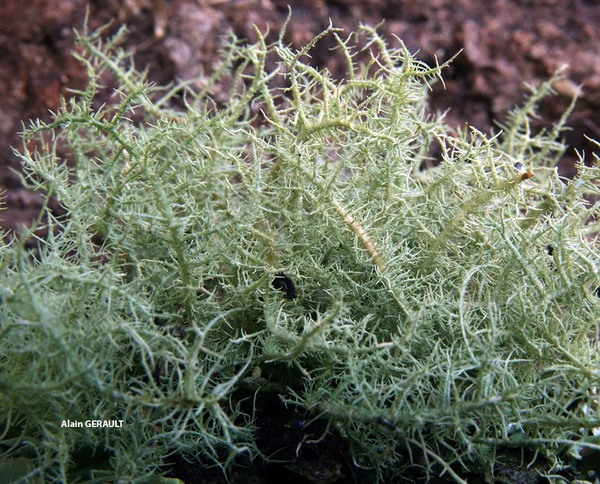
Alain Gerault - Source: http://www.lichensmaritimes.org/index.php?task=fiche&lichen=660&lang=en
France, Cranou
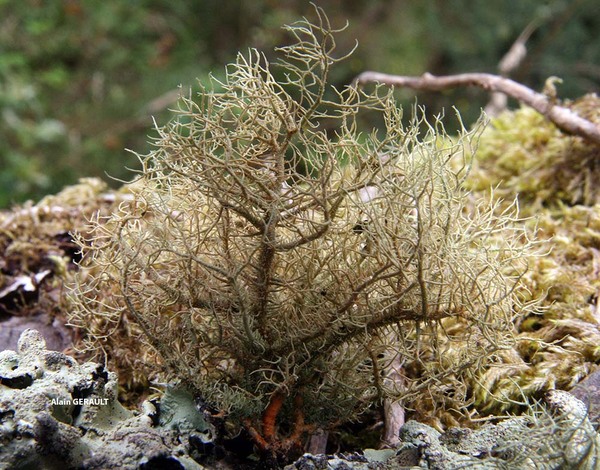
Alain Gerault - Source: http://www.lichensmaritimes.org/index.php?task=fiche&lichen=660&lang=en
France, Huelgoat
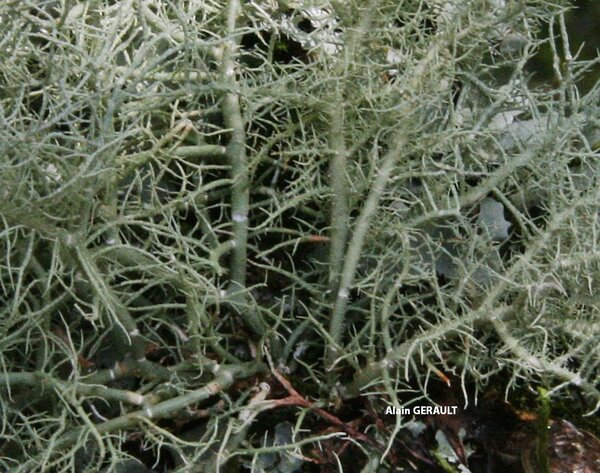
Alain Gerault - Source: http://www.lichensmaritimes.org/index.php?task=fiche&lichen=660&lang=en
France, Landevennec, Moulin Mer
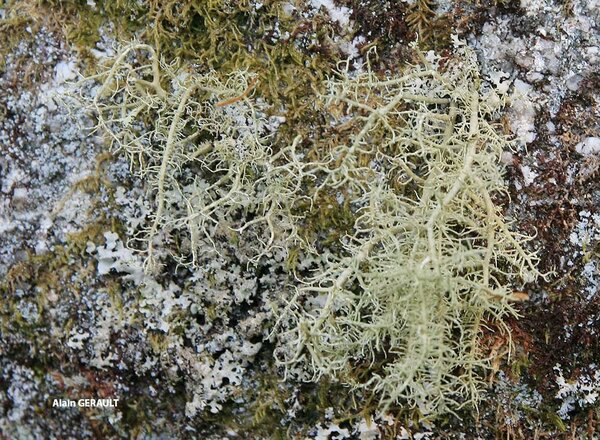
Alain Gerault - Source: http://www.lichensmaritimes.org/index.php?task=fiche&lichen=660&lang=en
France, St. Herbot
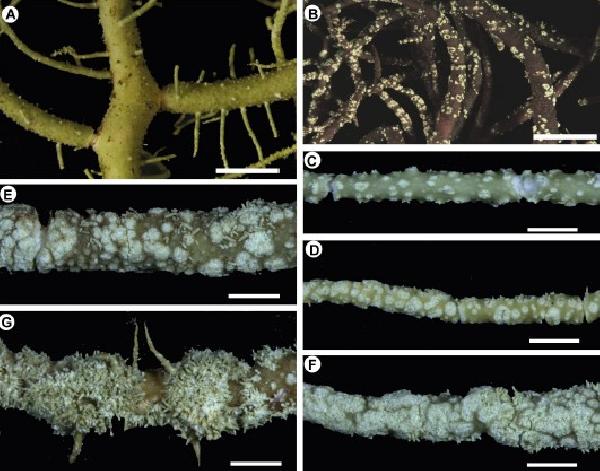
CC BY 4.0 - Source: Gerlach A, da Silveira R MB, Rojas C, Clerc P. Naming and describing the diversity in the Usnea cornuta aggregate (lichenized Ascomycota, Parmeliaceae) focusing on Brazilian specimens. Plant and Fungal Systematics. 2020;65(2):272–302. doi:10.35535/pfsyst-2020-0024.
Usnea cornuta. A – lateral branches constricted at attachment point (DNA 198); B – terminal branches densely covered with consoralia
(Grundlehner s.n.); C – minute, young and isolated soralia (Gerlach & Clerc 2552, DNA 287); D – numerous, mature soralia fusing
into consoralia towards the end of the branch (Aptroot 75462, DNA 233); E, F – mature consoralia (E: Gerlach & Penati 2016/ P47, DNA 124;
F: Gerlach & Penati 2016/ P47, DNA 124); G – strongly convex and overdeveloped consoralia covered with isidiomorphs (Canestraro & Lozano
487). Scales: A–B = 2 mm; C–G = 500 μm.
Growth form: Fruticose filamentous
Substrata: bark and rocks
Photobiont: green algae other than Trentepohlia
Reproductive strategy: mainly asexual, by soredia, or soredia-like structures (e.g. blastidia)
Restricted to humid-warm, oceanic areas
Commonnes-rarity: (info)
Alpine belt: absent
Subalpine belt: absent
Oromediterranean belt: absent
Montane belt: very rare
Submediterranean belt: absent
Padanian area: absent
Humid submediterranean belt: extremely rare
Humid mediterranean belt: absent
Dry mediterranean belt: absent

Predictive model
| Herbarium samples |

Tiiu Tõrra; Owner: Tiiu Tõrra - Institute of Ecology and Earth Sciences, University of Tartu, Estonia

Tiiu Tõrra; Owner: Tiiu Tõrra - Institute of Ecology and Earth Sciences, University of Tartu, Estonia

Tiiu Tõrra; Owner: Tiiu Tõrra - Institute of Ecology and Earth Sciences, University of Tartu, Estonia

Tiiu Tõrra; Owner: Tiiu Tõrra - Institute of Ecology and Earth Sciences, University of Tartu, Estonia

Tiiu Tõrra; Owner: Tiiu Tõrra - Institute of Ecology and Earth Sciences, University of Tartu, Estonia

Tiiu Tõrra; Owner: Tiiu Tõrra - Institute of Ecology and Earth Sciences, University of Tartu, Estonia

Tiiu Tõrra; Owner: Tiiu Tõrra - Institute of Ecology and Earth Sciences, University of Tartu, Estonia

Tiiu Tõrra; Owner: Tiiu Tõrra - Institute of Ecology and Earth Sciences, University of Tartu, Estonia

Tiiu Tõrra; Owner: Tiiu Tõrra - Institute of Ecology and Earth Sciences, University of Tartu, Estonia

Tiiu Tõrra; Owner: Tiiu Tõrra - Institute of Ecology and Earth Sciences, University of Tartu, Estonia

Tiiu Tõrra; Owner: Tiiu Tõrra - Institute of Ecology and Earth Sciences, University of Tartu, Estonia

Bernard Bouffinier - Source: http://www.lichensmaritimes.org/index.php?task=fiche&lichen=660&lang=en
France, Camaret

Bernard Bouffinier - Source: http://www.lichensmaritimes.org/index.php?task=fiche&lichen=660&lang=en
France, Camaret

Bernard Bouffinier - Source: http://www.lichensmaritimes.org/index.php?task=fiche&lichen=660&lang=en
France, Le Relecq

Bernard Bouffinier - Source: http://www.lichensmaritimes.org/index.php?task=fiche&lichen=660&lang=en
France, Hôpital-Camfrou

Bernard Bouffinier - Source: http://www.lichensmaritimes.org/index.php?task=fiche&lichen=660&lang=en
France, Hôpital-Camfrou

Michel David - Source: http://www.lichensmaritimes.org/index.php?task=fiche&lichen=660&lang=en
France, Roc'h Cléguer

Michel David - Source: http://www.lichensmaritimes.org/index.php?task=fiche&lichen=660&lang=en
France, Roc'h Cléguer

Alain Gerault - Source: http://www.lichensmaritimes.org/index.php?task=fiche&lichen=660&lang=en
France, Cranou

Alain Gerault - Source: http://www.lichensmaritimes.org/index.php?task=fiche&lichen=660&lang=en
France, Huelgoat

Alain Gerault - Source: http://www.lichensmaritimes.org/index.php?task=fiche&lichen=660&lang=en
France, Landevennec, Moulin Mer

Alain Gerault - Source: http://www.lichensmaritimes.org/index.php?task=fiche&lichen=660&lang=en
France, St. Herbot

 INDEX FUNGORUM
INDEX FUNGORUM
 GBIF
GBIF
 DOLICHENS
DOLICHENS



